How to travel on a budget?
Dreaming of exploring new horizons without breaking the bank? Discover expert tips and affordable destinations to make your travel dreams a reality.
Imagine strolling through the charming streets of Paris, hiking the breathtaking trails of Patagonia, or lounging on a pristine beach in Bali – all without breaking the bank. It’s time to turn those daydreams into reality! In this guide, we’ll unlock the secrets of budget travel, showing you how to stretch your dollars (or euros, or yen) further than you ever thought possible. From clever planning strategies to insider tips on scoring deals, we’ll cover everything you need to know to embark on your next adventure without emptying your savings account.
Get ready to discover how to travel on a budget like a pro! We’ll dive into essential topics such as planning your trip efficiently, navigating Europe on a shoestring, finding affordable transportation and accommodation, and much more. So pack your bags (and your money-saving mindset) – it’s time to explore the world without breaking the bank! 🌟💰
Planning Your Trip

Start Planning Early
Planning your budget-friendly trip well in advance is one of the most effective ways to save money and ensure a smooth travel experience. By starting early, you open up a world of opportunities to snag the best deals and make informed decisions about your itinerary.
Benefits of Early Planning
- Better flight and accommodation deals
- More time to research budget-friendly options
- Opportunity to save money through advance bookings
- Flexibility to adjust plans based on budget constraints
One of the primary advantages of early planning is the ability to secure better deals on flights and accommodations. Airlines and hotels often offer lower prices for bookings made well in advance. By monitoring prices over time, you can identify trends and book when rates are at their lowest.
| Time Before Travel | Average Savings on Flights | Average Savings on Accommodations |
|---|---|---|
| 6+ months | 20-30% | 15-25% |
| 3-6 months | 15-25% | 10-20% |
| 1-3 months | 10-15% | 5-15% |
| < 1 month | 0-10% | 0-10% |
Early planning also allows you to thoroughly research budget-friendly options for transportation, accommodation, and activities. You’ll have time to compare prices, read reviews, and make informed decisions that align with your budget and preferences.
Choose Budget-Friendly Destinations
Selecting the right destination is crucial for budget travel. Some locations offer incredible experiences at a fraction of the cost of more popular tourist spots. When choosing your destination, consider factors such as:
- Cost of living
- Exchange rates
- Off-season travel opportunities
- Availability of budget accommodations and transportation
Top Budget-Friendly Destinations
- Southeast Asia (Thailand, Vietnam, Cambodia)
- Eastern Europe (Hungary, Czech Republic, Poland)
- South America (Colombia, Peru, Bolivia)
- Portugal and Spain (outside major cities)
- Morocco and Tunisia
These destinations offer a rich cultural experience, beautiful landscapes, and affordable prices for food, accommodation, and activities. For example, in Southeast Asia, you can often find comfortable accommodations for under $20 per night and delicious street food for less than $5 per meal.
When considering your destination, also look into off-season travel opportunities. Visiting popular destinations during their shoulder or low season can result in significant savings on flights and accommodations, as well as fewer crowds at major attractions.
Set a Travel Budget
Creating a comprehensive travel budget is essential for keeping your expenses in check and ensuring you have enough funds for your entire trip. Here’s how to set an effective travel budget:
- Determine your total available funds
- Research average costs for your chosen destination
- Allocate funds for different expense categories
- Add a buffer for unexpected costs
Sample Budget Breakdown
| Expense Category | Percentage of Total Budget |
|---|---|
| Transportation | 25-30% |
| Accommodation | 25-30% |
| Food and Drinks | 20-25% |
| Activities | 10-15% |
| Miscellaneous | 5-10% |
When setting your budget, be realistic about your spending habits and preferences. If you know you enjoy trying local cuisines, allocate more funds to your food budget. If you’re planning to visit many attractions, increase your activities budget accordingly.
Use budgeting apps or spreadsheets to track your expenses before and during your trip. This will help you stay accountable and make adjustments as needed.
Tip: Leverage Travel Rewards and Loyalty Programs
One often overlooked aspect of budget travel planning is taking advantage of travel rewards and loyalty programs. These programs can significantly reduce your travel costs and even provide free flights or hotel stays.
Maximizing Travel Rewards
- Sign up for airline and hotel loyalty programs
- Consider travel rewards credit cards
- Accumulate points through everyday spending
- Look for bonus point opportunities
- Be flexible with redemption options
Many credit card companies offer sign-up bonuses that can cover a significant portion of your travel expenses. For example, some cards offer enough points for a round-trip flight after meeting a minimum spending requirement.
| Reward Type | Potential Savings |
|---|---|
| Flight | $200 – $1000+ |
| Hotel Stay | $100 – $500+ per night |
| Car Rental | $50 – $200+ per rental |
When using travel rewards, be strategic about when and how you redeem your points. Look for transfer partners and promotions that can maximize the value of your points. Remember that flexibility in your travel dates can often lead to better redemption rates.
By incorporating these travel rewards strategies into your early planning process, you can significantly reduce your out-of-pocket expenses and stretch your travel budget further.
As we move forward in planning your budget-friendly trip, it’s important to consider how you’ll save money on transportation once you’ve chosen your destination and set your budget. The next section will delve into various strategies for finding affordable transportation options, from flights to local transit, ensuring you can explore your chosen destination without breaking the bank.
How to travel on a budget in Europe?
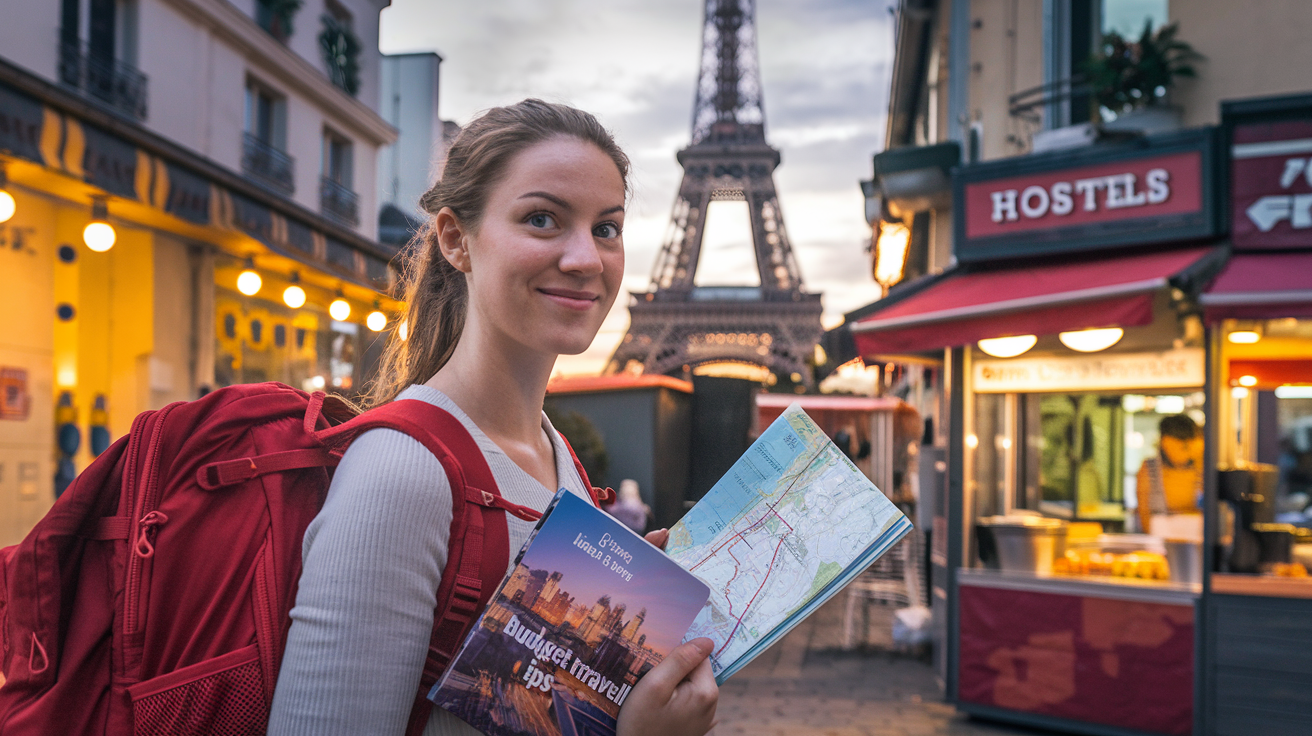
Exploring Europe on a Shoestring
Europe may seem like an expensive destination, but with careful planning and smart choices, you can experience its rich culture and stunning landscapes without breaking the bank. To travel on a budget in Europe, start by choosing less touristy destinations or visiting popular cities during the off-season. Eastern European countries like Poland, Hungary, and Romania offer incredible experiences at a fraction of the cost of their Western counterparts.
Consider purchasing a Eurail Pass for affordable train travel across multiple countries. This not only saves money but also provides flexibility in your itinerary. For accommodations, look beyond traditional hotels and explore budget-friendly options like hostels, guesthouses, or vacation rentals. Many European cities also have excellent public transportation systems, so skip the taxis and opt for local buses or metros to get around.
When it comes to dining, embrace the local cuisine by shopping at markets and preparing some of your meals. Street food and small local eateries often offer delicious and authentic experiences at reasonable prices. Take advantage of free walking tours available in many European cities to learn about the history and culture without spending a dime.
Lastly, be mindful of hidden costs like ATM fees and foreign transaction charges. Use a travel-friendly credit card and withdraw larger amounts of cash less frequently to minimize fees. With these strategies, you can make your European adventure both memorable and affordable.
Saving Money on Transportation
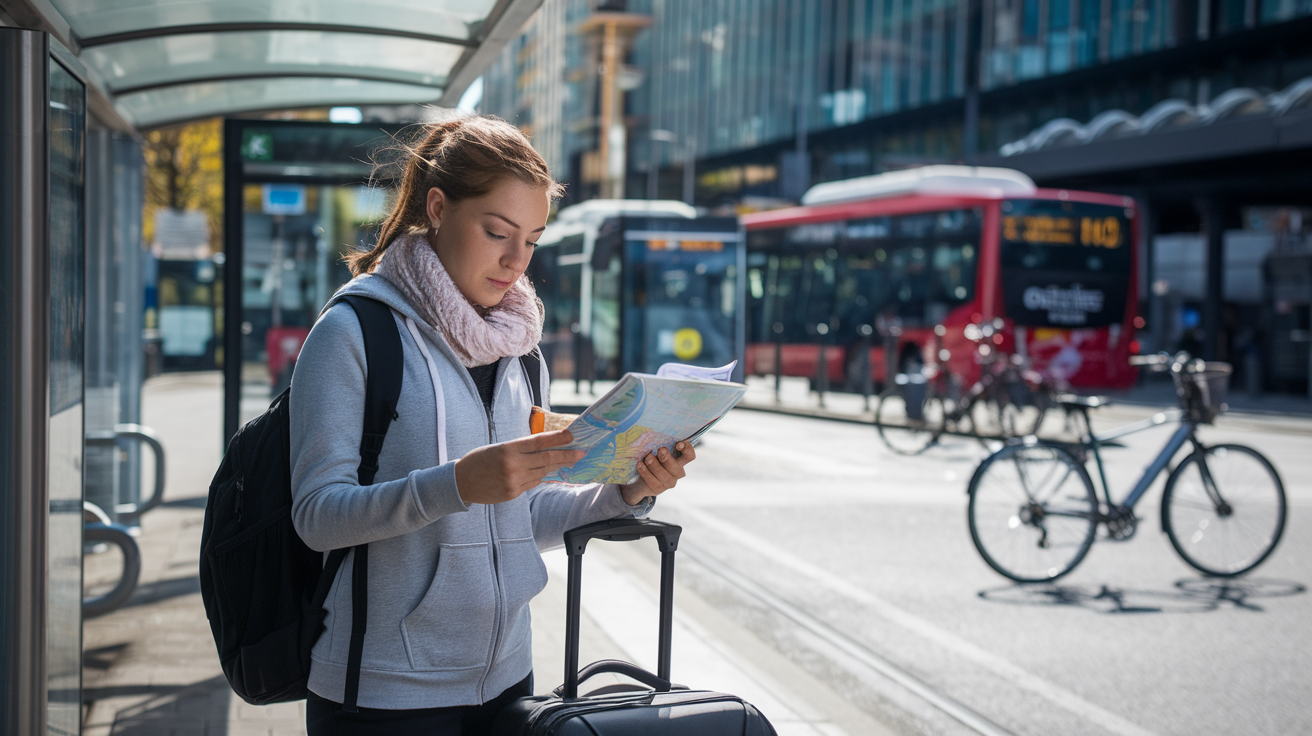
Find Cheap Flights
When it comes to budget travel, finding affordable flights can make a significant difference in your overall expenses. Here are some expert tips to help you secure the best deals on airfare:
- Be flexible with your travel dates: Flying on weekdays, especially Tuesdays and Wednesdays, can often result in lower fares. Use flexible date search options on flight comparison websites to identify the cheapest days to fly.
- Book in advance: Generally, booking your flights 6-8 weeks before your departure date can lead to better prices. However, this can vary depending on the destination and season.
- Use flight comparison websites: Platforms like Skyscanner, Kayak, and Google Flights allow you to compare prices across multiple airlines and dates.
- Set up price alerts: Many flight search engines offer price alert features. Set these up for your desired routes to get notified when prices drop.
- Consider budget airlines: Low-cost carriers often offer significantly cheaper fares, but be aware of additional fees for baggage, seat selection, and other amenities.
- Look for airline error fares: Occasionally, airlines mistakenly list flights at incredibly low prices. Websites like Secret Flying and Airfarewatchdog track these deals.
- Use airline miles and credit card rewards: Accumulate points through loyalty programs and credit card spending to redeem for free or discounted flights.
Here’s a comparison of popular flight search engines:
| Flight Search Engine | Pros | Cons |
|---|---|---|
| Skyscanner | Wide range of airlines, flexible date search | Sometimes redirects to third-party booking sites |
| Google Flights | User-friendly interface, price tracking | Doesn’t include all budget airlines |
| Kayak | Comprehensive search, price forecasts | Can be overwhelming with too many options |
| Momondo | Often finds lowest prices, includes budget airlines | Search process can be slower |
Use Public Transportation
Once you’ve reached your destination, using public transportation is an excellent way to save money while exploring. Here’s how to make the most of it:
- Research transportation options before arrival: Familiarize yourself with the local public transportation system, including buses, trains, and metros.
- Purchase multi-day passes: Many cities offer tourist passes that provide unlimited rides on public transportation for a set number of days. These can be more cost-effective than buying individual tickets.
- Download transportation apps: Many cities have official apps for their public transportation systems, providing real-time updates and route planning.
- Use night buses: If available, night buses can be a budget-friendly alternative to taxis for late-night travel.
- Consider city bikes: Many urban areas have bike-sharing programs, which can be an affordable and fun way to explore.
- Walk when possible: For short distances, walking is not only free but also allows you to experience the local atmosphere.
- Avoid rush hours: If your schedule is flexible, travel during off-peak hours to avoid crowded transportation and potentially save money.
Stay in Budget Accommodations
When it comes to traveling on a budget, choosing the right accommodation can make a significant difference in your overall expenses. Budget accommodations offer a cost-effective solution without sacrificing comfort or safety. Here are some excellent options to consider:
- Hostels: These are the go-to choice for many budget travelers, especially backpackers. Hostels offer dormitory-style rooms with shared facilities, making them significantly cheaper than hotels. Many hostels also provide private rooms for those who prefer more privacy.
- Guesthouses: Often family-run, guesthouses offer a more personal touch and local experience. They’re typically less expensive than hotels and can be found in both urban and rural areas.
- Budget hotels: These no-frills accommodations provide basic amenities at a lower cost. While they may lack luxury features, they offer clean and comfortable rooms for budget-conscious travelers.
- University dorms: During summer breaks, many universities rent out their dorm rooms to travelers at very affordable rates. This option is particularly useful in expensive cities.
- Capsule hotels: Popular in Japan and spreading to other countries, these hotels offer small, private sleeping pods at a fraction of the cost of traditional hotel rooms.
Here’s a comparison of these budget accommodation options:
| Accommodation Type | Pros | Cons | Best For |
|---|---|---|---|
| Hostels | Very affordable, social atmosphere | Shared spaces, potential noise | Solo travelers, backpackers |
| Guesthouses | Local experience, homely feel | Limited amenities, variable quality | Couples, families |
| Budget hotels | Private rooms, basic amenities | Can be impersonal, limited services | All types of travelers |
| University dorms | Very cheap, often centrally located | Basic facilities, limited availability | Students, solo travelers |
| Capsule hotels | Extremely affordable, unique experience | Very small spaces, limited privacy | Solo travelers, short stays |
When choosing budget accommodations, always read reviews from previous guests to ensure you’re getting good value for your money. Remember, the cheapest option isn’t always the best if it compromises your comfort or safety.
Use Sharing Economy Platforms
The rise of sharing economy platforms has revolutionized budget travel, offering affordable alternatives to traditional accommodations. These platforms connect travelers with local hosts who rent out their spare rooms, apartments, or entire homes. Here’s how you can leverage these platforms for budget-friendly stays:
- Airbnb: This popular platform offers a wide range of accommodations, from shared rooms to entire houses. It’s often cheaper than hotels, especially for longer stays or group travel.
- Couchsurfing: This platform connects travelers with locals who offer free accommodation. While it’s the most budget-friendly option, it’s more about cultural exchange than just finding a place to sleep.
- HomeExchange: This service allows you to swap homes with another traveler, effectively eliminating accommodation costs. It’s ideal for longer stays and family trips.
- VRBO (Vacation Rentals by Owner): Similar to Airbnb, VRBO focuses on entire home rentals, which can be cost-effective for families or groups.
- Trusted House sitters: This platform connects pet owners with travelers who are willing to look after their pets in exchange for free accommodation.
Consider Alternative Accommodations
Thinking outside the box can lead to unique and budget-friendly accommodation options. Here are some alternative choices to consider:
- Camping: Whether in a tent or RV, camping can be an incredibly affordable way to travel, especially in areas with beautiful natural surroundings.
- Monasteries and convents: In some countries, particularly in Europe, religious institutions offer simple, peaceful, and inexpensive accommodation to travelers.
- Farm stays: These provide a unique rural experience and often include meals made with fresh, local produce. They’re typically cheaper than hotels and offer a glimpse into local agricultural life.
- Housesitting: Websites like MindMyHouse and HouseCarers connect travelers with homeowners who need someone to look after their house (and often pets) while they’re away.
- Overnight trains or buses: In some cases, booking an overnight journey can save you the cost of a night’s accommodation while also covering transportation.
- Homestays: Living with a local family can be an enriching cultural experience and is often more affordable than hotels.
- Workamping: This involves exchanging work (often at campgrounds or hostels) for free accommodation and sometimes a small stipend.
When considering these alternative accommodations, it’s important to weigh the trade-offs between cost, comfort, and experience. What works best will depend on your travel style, destination, and personal preferences.
By exploring these various budget accommodation options, from traditional hostels to unique alternatives like monasteries or farm stays, you can significantly reduce your travel expenses without compromising on the quality of your experience. Remember, where you stay is not just about having a place to sleep – it’s an integral part of your travel adventure. Choose wisely, and you might find that your budget accommodations become some of the most memorable aspects of your journey.
Now that we’ve covered how to save money on accommodations, let’s explore ways to cut costs on another significant travel expense: food and drinks.
Saving Money on Food and Drinks

Cook Your Own Meals
One of the most effective ways to save money on food while traveling is to cook your own meals. This approach not only helps you stick to your budget but also allows you to experience local ingredients and cuisines in a more intimate way.
Finding Accommodations with Kitchen Facilities
To make cooking your own meals possible, look for accommodations that offer kitchen facilities. Here are some options:
- Hostels with communal kitchens
- Vacation rentals or apartments with full kitchens
- Hotels with kitchenettes
- Campsites with cooking areas
When booking your accommodation, prioritize places that provide these amenities to maximize your cooking opportunities.
Shopping at Local Markets and Grocery Stores
Once you’ve secured a place to cook, the next step is to shop for ingredients. Local markets and grocery stores are excellent sources for affordable and fresh produce. Here’s why:
- You’ll find a wider variety of local ingredients
- Prices are often lower than in tourist areas
- It’s an opportunity to immerse yourself in the local culture
When shopping, keep an eye out for:
- Seasonal fruits and vegetables
- Local spices and condiments
- Fresh bread and pastries
Simple and Budget-Friendly Meal Ideas
Here are some easy and affordable meal ideas that you can prepare while traveling:
- Breakfast:
- Oatmeal with local fruits
- Yogurt parfait with granola and honey
- Toast with avocado and eggs
- Lunch:
- Sandwiches with local meats and cheeses
- Salads with fresh vegetables and a simple vinaigrette
- Pasta salad with vegetables and canned tuna
- Dinner:
- Stir-fry with local vegetables and rice
- One-pot pasta dishes
- Grilled or roasted local meats with vegetables
Tips for Cooking While Traveling
- Pack essential cooking tools:
- A small, sharp knife
- A compact cutting board
- Reusable food containers
- Portable spice kit
- Plan your meals:
- Research local ingredients before your trip
- Create a rough meal plan to avoid waste
- Be flexible and adapt to what’s available locally
- Use communal kitchens wisely:
- Clean up after yourself
- Label your food items
- Be respectful of shared spaces and equipment
Eat Like a Local
Eating like a local is not only a great way to save money but also an excellent opportunity to immerse yourself in the local culture and cuisine. Here are some strategies to help you eat like a local and stay within your budget:
Avoid Tourist Traps
Tourist areas are often filled with overpriced restaurants that cater to visitors. To eat like a local and save money:
- Venture away from popular tourist spots
- Look for restaurants filled with locals rather than tourists
- Ask locals or your accommodation staff for recommendations
Try Street Food
Street food is often one of the most affordable and authentic ways to experience local cuisine. Here’s why it’s a great option:
- It’s typically much cheaper than sit-down restaurants
- You can try a variety of dishes for less money
- It’s a genuine representation of local flavors
Explore Local Markets and Food Halls
Local markets and food halls are excellent places to find affordable and authentic meals. They offer:
- A wide variety of local dishes
- Fresh ingredients
- Affordable prices
- A chance to observe local food culture
When visiting markets and food halls:
- Look for stalls with long lines of locals
- Ask vendors about their specialties
- Be open to trying new and unfamiliar dishes
- Consider sharing dishes with travel companions to try more varieties
Embrace Local Dining Customs
Understanding and embracing local dining customs can help you save money and have a more authentic experience:
- Learn about typical mealtimes in your destination
- Understand tipping customs to avoid overpaying
- Look for local lunch specials or set menus
- Be aware of local drinking customs and affordable beverage options
Research Affordable Dining Options
Proper research before and during your trip can lead you to budget-friendly dining options that don’t compromise on quality or experience. Here are some strategies to help you find affordable places to eat:
Use Technology to Your Advantage
Leverage technology to find budget-friendly dining options:
- Apps and websites:
- TripAdvisor
- Yelp
- Google Maps
- Local food blogs
- Social media:
- Follow local food bloggers on Instagram
- Join Facebook groups for budget travelers or expats in your destination
- Check location tags on Instagram to see popular local spots
Look for Deals and Discounts
Many restaurants offer special deals and discounts that can help you save money:
- Happy hour specials
- Early bird or late-night menus
- Lunch set menus
- Student or senior discounts
- Restaurant week promotions
Keep an eye out for these offers and plan your meals accordingly.
Consider Alternative Dining Experiences
Think outside the box when it comes to dining experiences:
- Food tours:
- Often provide good value for money
- Allow you to try multiple dishes and cuisines
- Offer insights into local food culture
- Cooking classes:
- Learn to make local dishes
- Often include a meal as part of the experience
- Provide skills you can use throughout your trip
- Picnics:
- Buy ingredients from local markets or grocery stores
- Enjoy meals in parks or scenic locations
- Great for budget-friendly lunches
Ask Locals for Recommendations
Locals are often the best source of information for affordable and authentic dining options:
- Strike up conversations with locals you meet
- Ask your accommodation staff for their favorite spots
- Connect with local guides or tour operators for insider tips
Remember, eating on a budget doesn’t mean sacrificing quality or experience. By cooking your own meals, eating like a local, and researching affordable dining options, you can enjoy delicious food while keeping your travel expenses in check. These strategies not only help you save money but also provide a more authentic and immersive travel experience. As we move forward, we’ll explore how to make the most of your trip by finding budget-friendly sightseeing and activities.
Sightseeing and Activities on a Budget
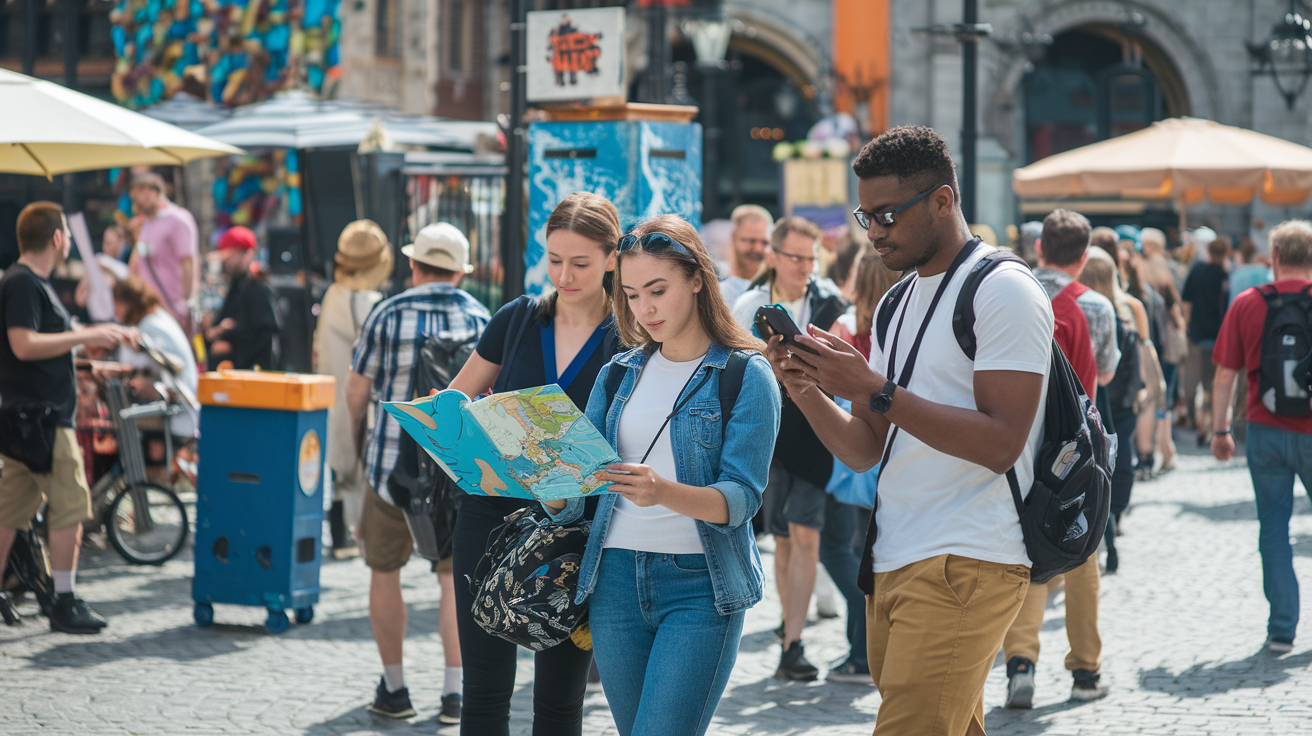
Visit Free and Low-Cost Attractions
When traveling on a budget, one of the best ways to enjoy your destination without breaking the bank is by seeking out free and low-cost attractions. Many cities around the world offer a wealth of experiences that won’t cost you a dime or are incredibly affordable.
Start by researching free museums and galleries in your destination. Many world-class institutions offer free admission days or certain hours when entry is complimentary. For example, the Louvre in Paris offers free admission on the first Saturday of each month from 6 pm to 9:45 pm. In London, the British Museum, National Gallery, and Tate Modern are always free to visit.
Walking tours are another excellent way to explore a city on a budget. Many cities offer free walking tours led by knowledgeable local guides. These tours typically operate on a tip-based system, allowing you to pay what you can afford or think the tour was worth. Not only do you get to see the main sights, but you also learn about the city’s history and culture from a local perspective.
Public spaces and landmarks often provide fantastic photo opportunities and cultural experiences without any cost. Parks, squares, and iconic structures like the Eiffel Tower or the Colosseum can be admired from the outside for free.
Here’s a list of common free or low-cost attractions to look for in your destination:
- Public parks and gardens
- Historic churches and cathedrals
- Local markets
- Street art and murals
- Free concerts or performances in public spaces
- Observation decks or viewpoints
- Government buildings with public access
- University campuses
- Beaches (where applicable)
- Festivals and local events
Explore Nature and Outdoor Activities
Nature and outdoor activities often provide some of the most memorable travel experiences, and the best part is that they’re usually free or very inexpensive. Hiking, for instance, is a fantastic way to explore the natural beauty of your destination while getting some exercise.
Research local hiking trails or nature reserves in the area you’re visiting. Many national parks offer affordable entry fees that grant access to multiple hiking trails and scenic viewpoints. For example, a single entry fee to Yosemite National Park in the United States provides access to numerous world-famous hikes and breathtaking vistas.
Beaches, if available in your destination, offer a plethora of free activities. Swimming, sunbathing, beach volleyball, and sandcastle building are all enjoyable ways to spend a day without spending a dime. Some beaches also offer free yoga classes or fitness boot camps.
Cycling is another budget-friendly way to explore your destination. Many cities now have bike-sharing programs that allow you to rent bicycles for a small fee. This not only saves money on transportation but also allows you to cover more ground than walking while still enjoying the outdoors.
Urban parks and green spaces are often overlooked gems in cities. They provide a perfect setting for picnics, people-watching, or simply relaxing with a good book. Many urban parks also offer free events like outdoor movie screenings or concerts during summer months.
Here’s a comparison of various outdoor activities and their typical costs:
| Activity | Typical Cost | Benefits |
|---|---|---|
| Hiking | Free to low-cost (park entry fees) | Exercise, scenic views, nature immersion |
| Beach activities | Free | Relaxation, swimming, sunbathing, sports |
| Cycling | Low-cost (bike rental) | Efficient exploration, exercise |
| Urban park visits | Free | Relaxation, local culture, possible free events |
| Nature photography | Free | Creative outlet, memorable souvenirs |
Use Discounts and Deals
To make the most of your budget for sightseeing and activities, it’s crucial to take advantage of various discounts and deals available. Many attractions offer reduced prices for students, seniors, or children, so always carry relevant ID to prove your eligibility.
City passes or tourist cards can be excellent value if you plan to visit multiple attractions. These passes often include entry to several top sights, as well as public transportation, for a fixed price. For example, the Paris Museum Pass offers entry to over 60 museums and monuments in and around Paris for a set fee, potentially saving you significant money if you plan to visit multiple sites.
Timing your visits can also lead to substantial savings. Many museums and attractions offer discounted or free entry on certain days of the week or during specific hours. Plan your itinerary around these times to maximize your savings.
Online booking platforms often provide discounts for advance purchases. Websites like GetYourGuide or Viator frequently offer deals on tours and activities, sometimes at lower prices than booking directly with the provider.
Don’t overlook the power of group discounts. If you’re traveling with friends or family, inquire about group rates for tours or attractions. Even if you’re solo, consider joining a group tour which can often be more affordable than private options.
Loyalty programs and memberships can also yield significant savings. For instance, being a member of an international museum association might grant you free or discounted entry to partner institutions worldwide.
Here are some additional tips for finding the best deals:
- Check the official tourism website of your destination for current promotions
- Look for combo tickets that include multiple attractions
- Consider purchasing an annual pass if you plan to visit a place multiple times
- Use deal sites like Groupon for local experiences and activities
- Follow social media accounts of attractions for flash sales or special offers
Remember, while seeking out deals and discounts is important, it’s equally crucial to ensure that the activities you choose align with your interests. A heavily discounted tour or attraction isn’t a good deal if it’s not something you genuinely want to experience. Balance cost-saving with your personal preferences to ensure a satisfying and budget-friendly travel experience.
As we move forward, it’s important to consider that while sightseeing and activities are crucial parts of any trip, they’re just one piece of the budget travel puzzle. In the next section, we’ll explore some general money-saving travel tips and hacks that can help you stretch your budget even further across all aspects of your journey.
Money-Saving Travel Tips and Hacks
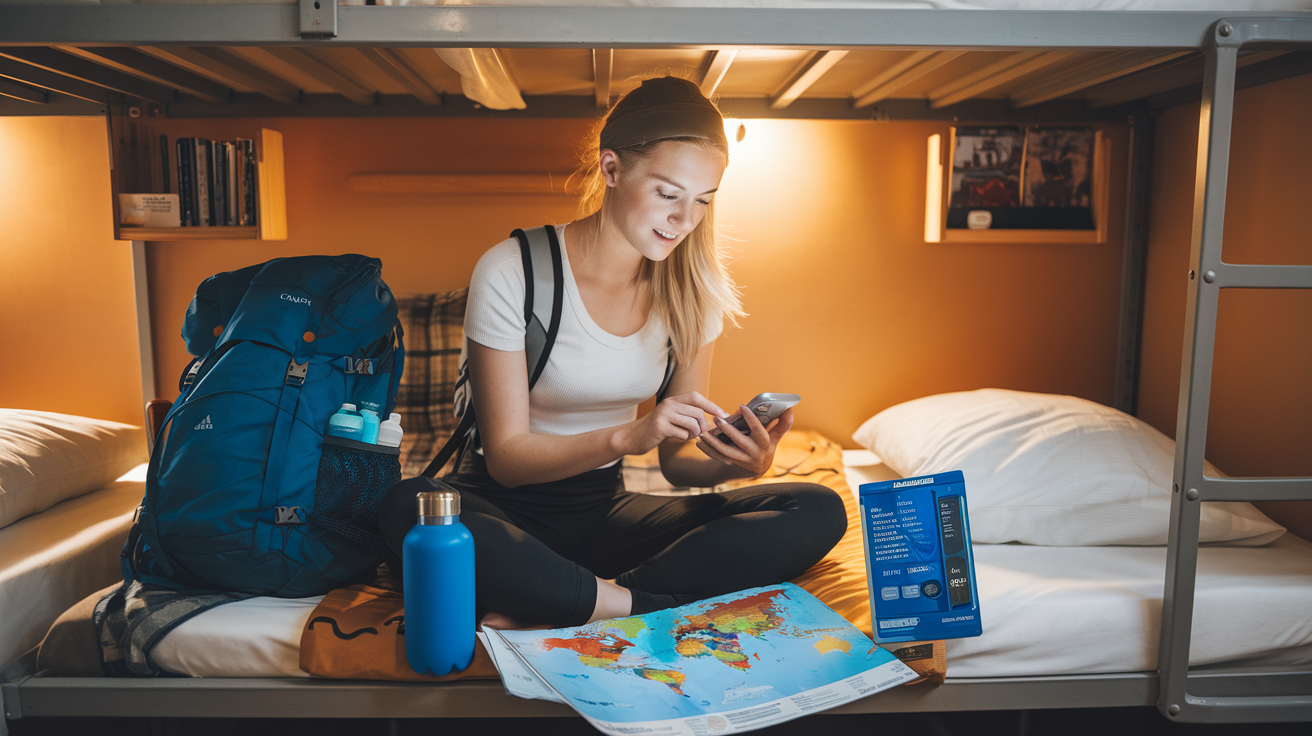
Travel During the Off-Peak Season
One of the most effective ways to save money on your travels is to plan your trip during the off-peak season. This strategy not only helps you cut costs but also allows you to enjoy popular destinations with fewer crowds. Here’s why traveling during the off-peak season can be a game-changer for budget travelers:
- Lower Prices: Airlines, hotels, and tour operators often reduce their prices during the off-season to attract more customers. This can lead to significant savings on your overall travel expenses.
- Better Availability: With fewer tourists around, you’ll have a better chance of booking your preferred accommodations and activities without the need for extensive advance planning.
- Authentic Experiences: Off-peak travel often provides a more genuine insight into local life and culture, as you’ll be interacting with residents rather than fellow tourists.
- Flexible Itineraries: Less crowded attractions mean shorter queues and more time to explore at your own pace.
To make the most of off-peak travel, consider the following tips:
- Research the destination’s peak and off-peak seasons
- Be prepared for potential weather changes
- Check for any seasonal closures of attractions or businesses
- Look for special off-season promotions and packages
Here’s a comparison of peak vs. off-peak travel for popular destinations:
| Destination | Peak Season | Off-Peak Season | Potential Savings |
|---|---|---|---|
| Paris | June-August | November-March | Up to 40% |
| Bali | July-August | January-April | Up to 50% |
| New York | December | January-February | Up to 30% |
| Caribbean | December-April | May-November | Up to 60% |
By strategically planning your trip during the off-peak season, you can enjoy substantial savings while still having an unforgettable travel experience.
Use Travel Rewards and Loyalty Programs
Another powerful way to save money on your travels is by leveraging travel rewards and loyalty programs. These programs can help you earn points or miles that can be redeemed for free or discounted travel perks. Here’s how you can make the most of these programs:
- Credit Card Rewards:
- Sign up for travel rewards credit cards
- Use your card for everyday purchases to accumulate points
- Look for sign-up bonuses that offer substantial points or miles
- Airline Loyalty Programs:
- Join frequent flyer programs of airlines you often use
- Accumulate miles through flights and partner activities
- Redeem miles for free flights or upgrades
- Hotel Loyalty Programs:
- Enroll in hotel chains’ loyalty programs
- Earn points for each stay
- Redeem points for free nights or room upgrades
- Car Rental Loyalty Programs:
- Join programs offered by major car rental companies
- Earn points for each rental
- Redeem for free rentals or upgrades
- Online Travel Agencies (OTAs) Rewards:
- Sign up for loyalty programs of OTAs like Expedia or Hotels.com
- Earn points on bookings made through their platforms
- Redeem for discounts on future bookings
To maximize your benefits from these programs, consider the following strategies:
- Focus on a few key programs rather than spreading your loyalty too thin
- Keep track of expiration dates for points and miles
- Look for opportunities to earn bonus points through promotions or special offers
- Consider using a points aggregator app to manage multiple loyalty programs
Here’s a comparison of popular travel rewards credit cards:
| Card Name | Annual Fee | Sign-up Bonus | Rewards Rate |
|---|---|---|---|
| Chase Sapphire Preferred | $95 | 60,000 points | 2x on travel and dining |
| Capital One Venture | $95 | 75,000 miles | 2x on all purchases |
| American Express Gold | $250 | 60,000 points | 4x on dining and groceries |
| Citi Premier | $95 | 60,000 points | 3x on travel, gas, and dining |
By strategically using travel rewards and loyalty programs, you can significantly reduce your travel expenses and even enjoy luxury perks at a fraction of the cost.
Pack Smart
Packing smart is an often overlooked aspect of budget travel, but it can have a significant impact on your overall expenses and travel experience. Here are some tips to help you pack efficiently and save money:
- Choose the Right Luggage:
- Opt for lightweight, durable luggage to avoid excess weight charges
- Consider a carry-on only approach to save on checked baggage fees
- Invest in packing cubes to maximize space and organization
- Pack Versatile Clothing:
- Choose items that can be mixed and matched
- Pack layers for varying weather conditions
- Opt for wrinkle-resistant fabrics to avoid dry cleaning costs
- Bring Essential Travel Items:
- Pack a reusable water bottle to avoid buying bottled water
- Bring a portable charger to stay connected without buying one abroad
- Include a small first-aid kit to avoid purchasing common medications
- Minimize Toiletries:
- Use travel-sized containers for toiletries to comply with airline regulations
- Consider solid toiletries (shampoo bars, solid deodorants) to save space and avoid leaks
- Research what toiletries are provided by your accommodation to avoid duplicates
- Pack Travel-Specific Items:
- Bring a travel towel if staying in budget accommodations
- Pack a travel clothesline for washing and drying clothes on the go
- Include a universal adapter to avoid buying one at your destination
- Prepare for Activities:
- Pack appropriate gear for planned activities (e.g., hiking shoes, swimwear)
- Consider renting equipment at your destination for occasional activities
- Don’t Forget Important Documents:
- Carry copies of important documents (passport, visas, insurance)
- Store digital copies in a secure cloud storage for easy access
Here’s a sample packing list for a week-long trip:
| Category | Items |
|---|---|
| Clothing | 5 T-shirts, 2 pairs of pants/shorts, 1 dress/nice outfit, 7 pairs of underwear and socks, 1 light jacket, 1 pair of comfortable shoes, 1 pair of sandals |
| Toiletries | Travel-sized shampoo, conditioner, body wash, toothbrush, toothpaste, deodorant, sunscreen |
| Electronics | Smartphone, charger, portable battery, universal adapter |
| Accessories | Sunglasses, hat, small daypack, reusable water bottle |
| Documents | Passport, credit cards, cash, travel insurance information |
By packing smart, you can:
- Avoid excess baggage fees
- Reduce the need to purchase items at your destination
- Stay comfortable and prepared for various situations
- Move more easily between destinations, potentially saving on transportation costs
Remember, the key to smart packing is to find the right balance between being prepared and traveling light. Assess your specific travel needs, consider the climate and culture of your destination, and pack accordingly. With practice, you’ll develop a packing strategy that saves you money and enhances your travel experience.
Now that we’ve covered these essential money-saving travel tips and hacks, let’s explore some specific destinations that offer great value for budget travelers.
Which Country Is the Cheapest To Visit?
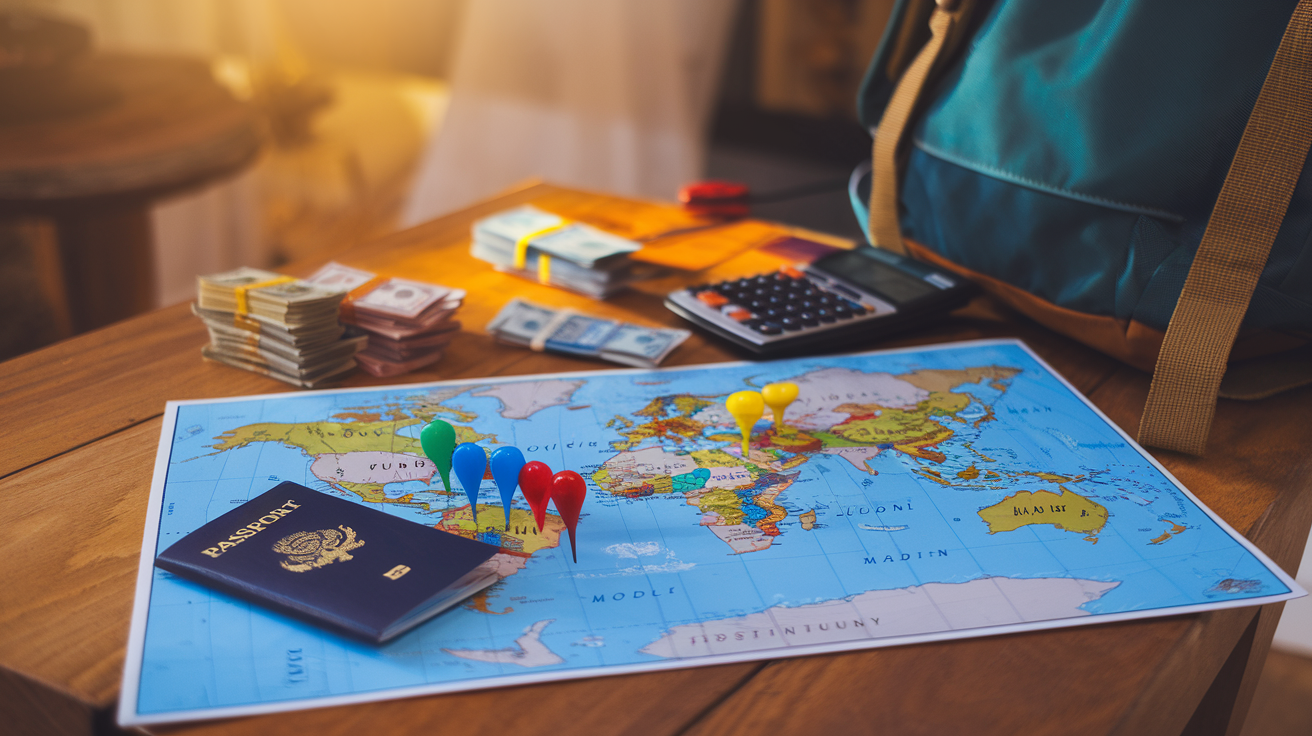
Cheapest Countries for Budget Travel
When it comes to stretching your travel dollars, some countries offer exceptional value for money. Let’s explore some of the most affordable destinations around the world that provide unforgettable experiences without breaking the bank.
Southeast Asia: A Budget Traveler’s Paradise
Southeast Asia has long been a favorite among budget travelers, and for good reason. Countries like Thailand, Vietnam, and Cambodia offer a perfect blend of rich culture, stunning landscapes, and affordable living costs.
Thailand
Thailand, often called the “Land of Smiles,” is a budget traveler’s dream. From bustling Bangkok to serene islands, Thailand offers diverse experiences at incredibly low prices.
- Accommodation: $5-$20 per night for budget options
- Meals: $1-$5 for street food and local restaurants
- Transportation: $0.50-$2 for local buses and trains
Vietnam
Vietnam is another Southeast Asian gem that offers incredible value. With its vibrant cities, picturesque countryside, and delicious cuisine, Vietnam is hard to beat for budget travelers.
- Accommodation: $5-$15 per night for budget options
- Meals: $1-$3 for local dishes
- Transportation: $0.30-$1.50 for local buses
Eastern Europe: Affordable European Charm
For those seeking European experiences without the hefty price tag, Eastern Europe offers a perfect solution. Countries like Bulgaria, Romania, and Hungary provide rich history, stunning architecture, and vibrant cultures at a fraction of the cost of their Western European counterparts.
Bulgaria
Bulgaria offers a unique blend of Black Sea beaches, mountain resorts, and historic cities, all at incredibly affordable prices.
- Accommodation: $10-$25 per night for budget options
- Meals: $3-$8 for local restaurants
- Transportation: $0.50-$1 for public transport in cities
Hungary
Hungary, with its stunning capital Budapest, offers a perfect mix of Eastern and Western European charm at budget-friendly prices.
- Accommodation: $10-$30 per night for budget options
- Meals: $4-$10 for local restaurants
- Transportation: $1-$2 for public transport in Budapest
South America: Adventure on a Budget
South America offers diverse landscapes, rich cultures, and exciting adventures at prices that won’t break the bank. Countries like Bolivia, Peru, and Ecuador stand out as particularly affordable options.
Bolivia
Bolivia is often considered the cheapest country to visit in South America, offering everything from Amazonian rainforests to the otherworldly Salar de Uyuni salt flats.
- Accommodation: $5-$15 per night for budget options
- Meals: $2-$5 for local restaurants
- Transportation: $1-$3 for local buses
Peru
While slightly more expensive than Bolivia, Peru still offers great value, especially considering attractions like Machu Picchu and the Amazon rainforest.
- Accommodation: $10-$25 per night for budget options
- Meals: $3-$8 for local restaurants
- Transportation: $0.50-$2 for local buses
Comparison of Budget-Friendly Destinations
To help you visualize the differences between these affordable countries, here’s a comparison table:
| Country | Accommodation (per night) | Meals (local food) | Local Transportation |
|---|---|---|---|
| Thailand | $5-$20 | $1-$5 | $0.50-$2 |
| Vietnam | $5-$15 | $1-$3 | $0.30-$1.50 |
| Bulgaria | $10-$25 | $3-$8 | $0.50-$1 |
| Hungary | $10-$30 | $4-$10 | $1-$2 |
| Bolivia | $5-$15 | $2-$5 | $1-$3 |
| Peru | $10-$25 | $3-$8 | $0.50-$2 |
Factors to Consider When Choosing a Budget Destination
While these countries are generally considered affordable, it’s important to remember that travel costs can vary depending on several factors:
- Season: Prices often increase during peak tourist seasons.
- Location within the country: Capital cities and popular tourist spots tend to be more expensive than rural areas.
- Your travel style: Luxury options are available even in budget-friendly countries.
- Exchange rates: Keep an eye on currency fluctuations as they can affect your budget.
- Visa costs: Some countries require visas that can add to your overall expenses.
Making the Most of Your Budget Trip
Regardless of which affordable country you choose to visit, here are some tips to stretch your budget even further:
- Stay in hostels or guesthouses instead of hotels
- Eat at local markets and street food stalls
- Use public transportation instead of taxis
- Take advantage of free walking tours in cities
- Look for free days at museums and attractions
- Consider traveling during the shoulder season for lower prices and fewer crowds
Balancing Cost and Experience
While it’s great to find affordable destinations, remember that the cheapest option isn’t always the best. Consider what experiences you want to have and choose a destination that offers the right balance of affordability and attractions that interest you.
For instance, while Southeast Asia might be cheaper overall, Eastern Europe could be a better choice if you’re particularly interested in European history and architecture. Similarly, if experiencing diverse landscapes is your priority, South America might be worth the slightly higher cost compared to Southeast Asia.
Now that we’ve explored some of the most affordable countries to visit, let’s look at an important aspect of international travel: currency exchange. Understanding when and where to exchange your money can have a significant impact on your travel budget.
Should I Exchange Money Before I Travel?
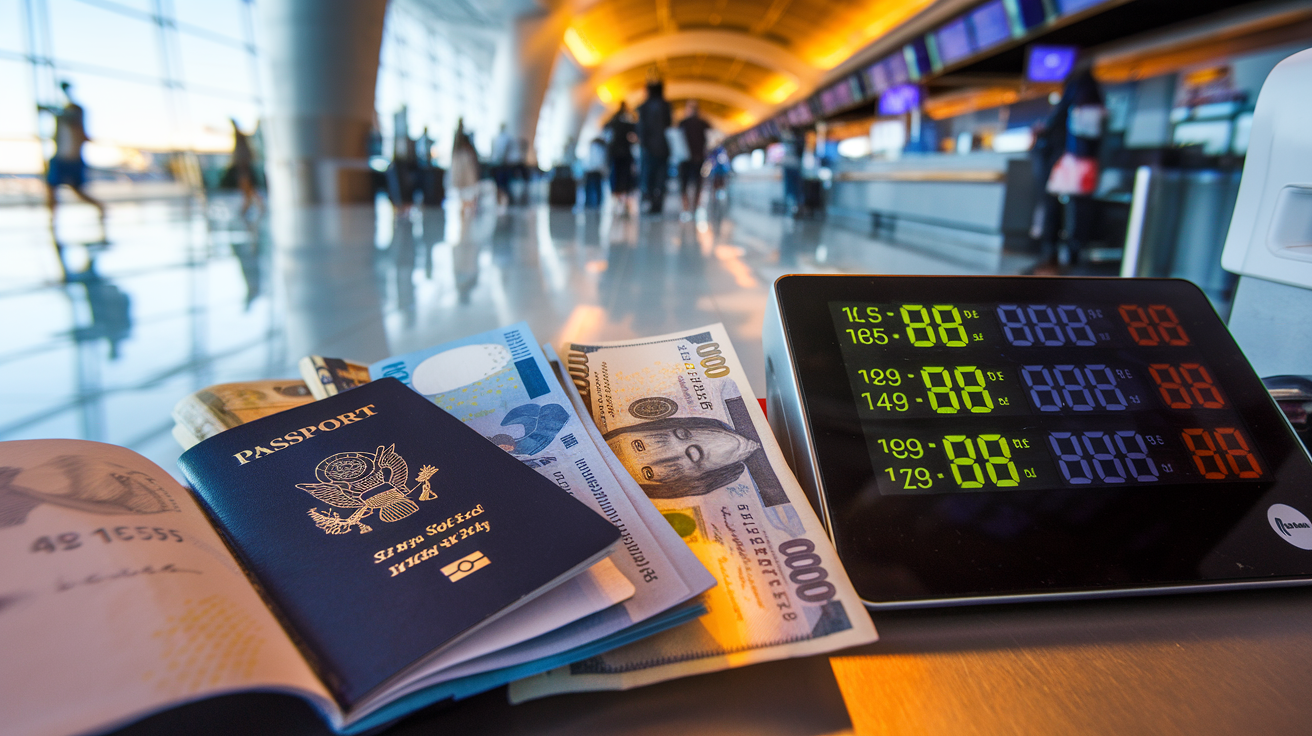
The Pros of Exchanging Money Before You Travel
Exchanging money before you travel can offer several advantages:
- Convenience: Having local currency on hand when you arrive at your destination can be extremely convenient. You’ll be able to pay for immediate expenses like transportation from the airport or a quick meal without having to search for an ATM or currency exchange office.
- Peace of Mind: Knowing you have some local currency can provide peace of mind, especially if you’re arriving late at night or in a less-developed area where finding currency exchange options might be challenging.
- Avoiding Airport Exchange Rates: Airport currency exchange offices often offer less favorable rates compared to other options. By exchanging money before your trip, you can avoid these potentially costly exchanges.
- Budgeting: Having local currency in advance allows you to better plan and budget for your initial expenses.
The Cons of Exchanging Money Before You Travel
However, there are also some drawbacks to consider:
- Potentially Unfavorable Exchange Rates: Rates at your home country’s banks or exchange offices may not be as competitive as those you can find at your destination.
- Risk of Carrying Cash: Traveling with large amounts of cash can be risky. There’s always the possibility of loss or theft.
- Unused Currency: If you exchange too much, you might end up with excess foreign currency at the end of your trip, which you’ll need to exchange back (often at a loss).
- Limited Flexibility: Pre-exchanging locks you into a rate, which might not be optimal if currency values fluctuate in your favor during your trip.
Alternatives to Pre-Trip Currency Exchange
Consider these alternatives to exchanging money before your trip:
- Using ATMs at Your Destination: Often, this is the most cost-effective way to get local currency, especially if your bank has international partners.
- Credit Cards with No Foreign Transaction Fees: These can be an excellent option for larger purchases, offering convenience and often favorable exchange rates.
- Travel Money Cards: Prepaid cards that can be loaded with multiple currencies are becoming increasingly popular among travelers.
- Mobile Payment Apps: In some destinations, apps like Apple Pay or Google Pay are widely accepted, reducing the need for cash.
Factors to Consider When Deciding
When deciding whether to exchange money before you travel, consider:
- Your Destination: Some countries have readily available ATMs and widely accept credit cards, while others are more cash-dependent.
- Length of Your Trip: For short trips, pre-exchanging a small amount might be more convenient.
- Your Bank’s International Fees: Check if your bank charges high fees for international ATM withdrawals or if they have partner banks abroad.
- Exchange Rate Trends: If the exchange rate is particularly favorable before your trip, it might be worth locking in that rate.
Tips for Smart Currency Exchange
Regardless of when you choose to exchange currency, keep these tips in mind:
- Compare Rates: Use online currency converters to compare rates from different providers.
- Avoid Airport Exchanges: If possible, avoid exchanging money at airports where rates are typically less favorable.
- Use Bank ATMs: When abroad, prefer ATMs associated with major banks rather than standalone ATMs, which may charge higher fees.
- Inform Your Bank: Always notify your bank of your travel plans to avoid potential card blocks.
- Diversify Your Payment Methods: Don’t rely solely on one method. Have a mix of cash, cards, and possibly a backup like traveler’s checks.
Currency Exchange Options Comparison
Here’s a comparison of different currency exchange options:
| Method | Pros | Cons |
|---|---|---|
| Pre-trip Exchange | Convenience, Peace of mind | Potentially unfavorable rates, Risk of carrying cash |
| ATMs Abroad | Often best rates, Convenient | Potential fees, May not be available everywhere |
| Credit Cards | Convenient, Good rates | Not accepted everywhere, Potential fees |
| Travel Money Cards | Convenient, Multiple currencies | Upfront fees, Limited acceptance |
| Mobile Payment Apps | Convenient, Often good rates | Limited acceptance in some areas |
Making the Right Choice for Your Trip
Ultimately, the decision to exchange money before you travel depends on your specific circumstances and destination. For most travelers, a combination of methods often works best:
- Exchange a small amount before your trip for immediate arrival expenses.
- Use ATMs at your destination for the bulk of your cash needs.
- Utilize credit cards with no foreign transaction fees for larger purchases.
- Consider a travel money card or mobile payment app as a backup.
By carefully considering your options and planning ahead, you can ensure you have access to the currency you need while minimizing exchange fees and maximizing convenience. Remember, the goal is to strike a balance between having enough local currency for your needs and avoiding the risks and potential losses associated with carrying too much cash.
As we move forward, it’s important to consider not just when to exchange money, but also where. The location of your currency exchange can significantly impact the rates you receive and the fees you pay. In the next section, we’ll explore the best places to exchange currency while traveling, helping you make informed decisions that can save you money throughout your journey.
Where Should I Exchange Currency While Traveling?
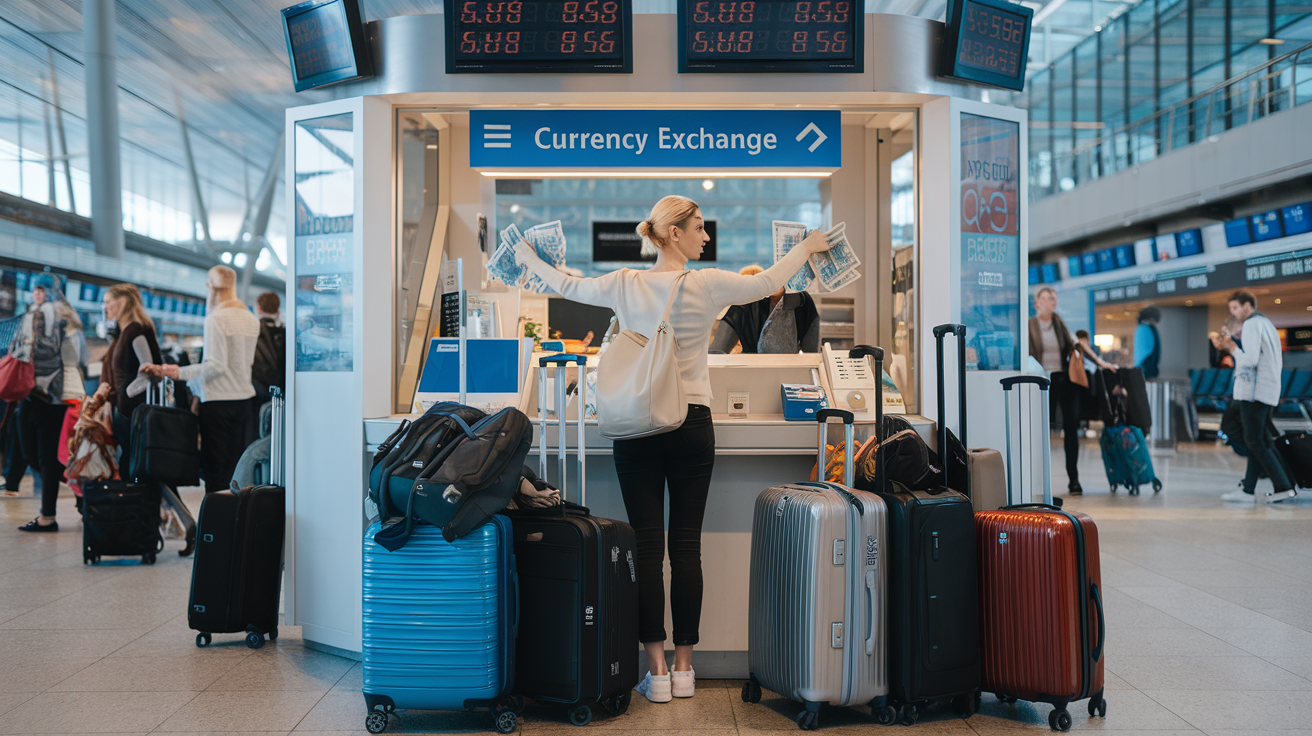
Best Places to Exchange Currency While Traveling
When traveling abroad, getting the best exchange rate for your money is crucial for sticking to your budget. Here are some of the most reliable and cost-effective options for exchanging currency during your travels:
1. Local Banks in Your Destination
One of the safest and most reliable places to exchange currency is at local banks in your destination country. Here’s why:
- Banks typically offer competitive exchange rates
- They’re secure and regulated institutions
- You can often find English-speaking staff at larger branches
However, keep in mind that banks may have limited operating hours and might be closed on weekends or holidays. It’s best to plan ahead and check their schedules.
2. ATMs
ATMs are widely available in most destinations and offer a convenient way to withdraw local currency. Consider these points when using ATMs:
- Look for ATMs affiliated with major banks to minimize fees
- Inform your bank about your travel plans to avoid card blocks
- Use ATMs in secure locations, preferably inside bank buildings or shopping centers
| Pros of Using ATMs | Cons of Using ATMs |
|---|---|
| 24/7 availability | Potential ATM fees |
| Convenient locations | Daily withdrawal limits |
| Often competitive rates | Possible card skimming risks |
3. Currency Exchange Kiosks at Airports
While airport kiosks are convenient, they often charge higher fees and offer less favorable exchange rates. If possible, exchange only a small amount at the airport for immediate needs, such as transportation to your hotel.
4. Local Currency Exchange Offices
In tourist areas, you’ll find numerous currency exchange offices. While they offer quick service, be cautious:
- Compare rates between different offices
- Ask about any additional fees
- Be wary of offices advertising “No Commission” as they may have hidden costs in their exchange rates
5. Hotels
Many hotels offer currency exchange services, but they typically have poor rates and high fees. It’s best to avoid exchanging large amounts at hotels unless you’re in a pinch.
6. Credit Cards with No Foreign Transaction Fees
While not a direct currency exchange method, using a credit card with no foreign transaction fees can be an excellent way to make purchases abroad:
- Look for cards specifically designed for international travel
- Inform your card issuer about your travel plans
- Always choose to pay in the local currency when given the option
7. Online Currency Exchange Services
Some online services allow you to order currency before your trip:
- Compare rates from different providers
- Consider delivery fees and processing times
- Ensure the service is reputable and secure
Tips for Getting the Best Exchange Rates
- Avoid exchanging at your home airport: Rates are typically unfavorable.
- Use a currency conversion app: Stay informed about current exchange rates.
- Avoid exchanging money at tourist attractions: These locations often have poor rates.
- Consider exchanging larger amounts: You may get better rates for larger transactions.
- Be aware of dynamic currency conversion: Always choose to pay in local currency when using your card.
Safety Considerations
When exchanging currency, keep these safety tips in mind:
- Be discreet when handling cash
- Use reputable exchange services
- Keep your receipts in case of discrepancies
- Be aware of common scams in your destination
Planning Ahead for Currency Exchange
To make the most of your budget, plan your currency exchange strategy before your trip:
- Research the local currency and typical exchange rates
- Estimate how much local currency you’ll need
- Check if your destination accepts major currencies like USD or EUR
- Consider bringing a mix of cash and cards for flexibility
Emerging Technologies in Currency Exchange
Keep an eye on these innovative solutions for future travels:
- Mobile currency exchange apps
- Peer-to-peer currency exchange platforms
- Cryptocurrency for international transactions (where accepted)
While these options are growing in popularity, always prioritize security and reliability when trying new methods.
Now that you know the best places to exchange currency while traveling, you’ll be better equipped to make informed decisions and save money on your currency exchanges. This knowledge will contribute significantly to your overall budget travel strategy, allowing you to allocate more funds to experiences and activities in your destination. In the next section, we’ll explore whether travel insurance is a necessary expense or if it’s something you can skip to save money on your budget trip.
Should I Avoid Travel Insurance To Save Money?

The Importance of Travel Insurance
When considering how to travel on a budget, it’s tempting to cut costs wherever possible. However, avoiding travel insurance to save money can be a risky decision that may end up costing you more in the long run. Let’s explore why travel insurance is crucial and how to find affordable options that fit your budget.
Understanding Travel Insurance
Travel insurance is a safety net that protects you financially and provides assistance during unexpected events while traveling. It typically covers:
- Medical emergencies
- Trip cancellations or interruptions
- Lost or delayed baggage
- Flight delays or cancellations
- Emergency evacuations
The Risks of Traveling Without Insurance
Traveling without insurance exposes you to significant financial risks:
- Medical emergencies: Healthcare costs in foreign countries can be exorbitant, especially for tourists.
- Trip cancellations: Unforeseen circumstances may force you to cancel your trip, resulting in lost deposits and payments.
- Lost luggage: Replacing all your belongings can be costly and inconvenient.
- Natural disasters or political unrest: These events may require emergency evacuation, which can be extremely expensive without insurance.
Cost-Benefit Analysis
Let’s compare the potential costs of traveling with and without insurance:
| Scenario | With Insurance | Without Insurance |
|---|---|---|
| Medical Emergency | Covered (minus deductible) | Potentially thousands of dollars |
| Trip Cancellation | Reimbursed (up to policy limit) | Full cost of trip lost |
| Lost Luggage | Reimbursed (up to policy limit) | Out-of-pocket replacement costs |
| Emergency Evacuation | Covered | Can exceed $100,000 |
As you can see, the potential costs of traveling without insurance far outweigh the upfront cost of a policy.
Finding Affordable Travel Insurance
While travel insurance is essential, it doesn’t have to break the bank. Here are some tips for finding budget-friendly options:
- Compare policies: Use comparison websites to find the best rates and coverage.
- Consider annual policies: If you travel frequently, an annual policy may be more cost-effective than individual trip policies.
- Check credit card benefits: Some credit cards offer travel insurance as a perk.
- Look for package deals: Some travel providers offer discounted insurance when booking flights or accommodations.
- Opt for basic coverage: Choose a policy that covers essentials like medical emergencies and trip cancellations, skipping extras you don’t need.
Tailoring Insurance to Your Trip
To ensure you’re not overpaying for coverage you don’t need, consider:
- Trip duration
- Destination(s)
- Planned activities (e.g., adventure sports)
- Value of your belongings
- Your health and any pre-existing conditions
By tailoring your policy to your specific needs, you can find a balance between adequate coverage and affordability.
Common Misconceptions About Travel Insurance
Let’s debunk some myths that might lead travelers to avoid insurance:
- “It’s too expensive”: While some policies can be pricey, affordable options are available, especially when compared to potential out-of-pocket costs.
- “My credit card covers everything”: Credit card coverage is often limited and may not include crucial benefits like medical evacuation.
- “I’m healthy, so I don’t need it”: Accidents can happen to anyone, and insurance covers more than just health issues.
- “It’s just a short trip”: Even short trips can be affected by cancellations, delays, or emergencies.
Real-Life Examples
Consider these scenarios where travel insurance proved invaluable:
- A traveler broke their leg while hiking in New Zealand. Their insurance covered medical treatment and an upgraded flight home with extra legroom.
- A family’s trip to Bali was cancelled due to a volcanic eruption. Insurance reimbursed their non-refundable expenses.
- A backpacker’s luggage was lost during a layover in Bangkok. Insurance covered the cost of essential items until the luggage was found.
These examples illustrate how travel insurance can save travelers from significant financial stress and logistical nightmares.
Tips for Using Travel Insurance Effectively
To make the most of your travel insurance:
- Read the policy carefully before purchasing
- Keep policy documents and emergency contact numbers easily accessible
- Report incidents or file claims as soon as possible
- Keep all relevant receipts and documentation
- Be honest about pre-existing conditions to ensure valid coverage
The Bottom Line on Travel Insurance
While it may seem like an unnecessary expense when trying to travel on a budget, travel insurance is a crucial investment in your peace of mind and financial security. The potential costs of traveling without insurance far outweigh the upfront expense of a policy. By shopping smart and tailoring your coverage to your needs, you can find affordable options that provide essential protection without breaking the bank.
The Bottom Line

Key Takeaways for Budget Travel
As we wrap up our comprehensive guide on how to travel on a budget, let’s recap the most crucial points to remember for your next affordable adventure:
- Plan Ahead: Early planning is your best friend when it comes to budget travel. By booking flights and accommodations well in advance, you can often secure significant discounts.
- Be Flexible: Flexibility with your travel dates and destinations can lead to substantial savings. Consider traveling during off-peak seasons or to less touristy locations.
- Prioritize Your Expenses: Focus on what matters most to you. If you’re a foodie, allocate more of your budget to trying local cuisines and save on accommodations by staying in hostels or budget hotels.
- Embrace Local Transportation: Opt for public transportation, walking, or cycling instead of taxis or rental cars to save money and experience the destination like a local.
- Choose Budget-Friendly Accommodations: Consider hostels, guesthouses, or vacation rentals instead of luxury hotels. Platforms like Airbnb or Couchsurfing can offer unique and affordable options.
The Impact of Smart Budgeting on Your Travel Experience
Smart budgeting doesn’t just save you money; it can significantly enhance your travel experience. Here’s how:
- Extended Travel: By stretching your budget, you can potentially extend your trip duration, allowing for more exploration and experiences.
- Authentic Experiences: Budget travel often leads to more authentic interactions with locals and a deeper understanding of the destination’s culture.
- Increased Frequency: Mastering budget travel techniques allows you to take more trips throughout the year, satisfying your wanderlust more often.
- Skill Development: Budget travel helps develop valuable skills like negotiation, problem-solving, and adaptability, which are useful in various life situations.
Balancing Cost and Experience
While traveling on a budget is about saving money, it’s crucial to strike a balance between cost-cutting and enjoying your trip. Here’s a comparison of areas where you can save versus where you might want to splurge:
| Save On | Splurge On |
|---|---|
| Accommodations | Unique Experiences |
| Transportation | Local Cuisine |
| Souvenirs | Cultural Activities |
| Drinks | Safety Measures |
| Entertainment | Travel Insurance |
Long-Term Benefits of Budget Travel
Adopting a budget travel mindset can have lasting positive impacts on your life:
- Financial Discipline: The skills you develop in budgeting for travel can translate to better overall financial management.
- Cultural Awareness: Budget travel often leads to more immersive experiences, fostering greater cultural understanding and empathy.
- Minimalism: You’ll learn to prioritize experiences over material possessions, potentially leading to a more minimalist lifestyle.
- Adaptability: Dealing with the challenges of budget travel can make you more adaptable and resilient in your daily life.
Sustainable Budget Travel
As we become more conscious of our impact on the environment and local communities, it’s important to consider sustainability in our budget travel plans:
- Support Local Businesses: Choose locally-owned accommodations and restaurants to ensure your money benefits the local economy.
- Use Eco-Friendly Transportation: Opt for trains, buses, or bicycles instead of flights or private cars when possible.
- Minimize Waste: Carry a reusable water bottle and shopping bag to reduce plastic waste.
- Respect Local Customs: Research and adhere to local customs and etiquette to show respect for the destination’s culture.
The Future of Budget Travel
As we look ahead, several trends are shaping the future of budget travel:
- Technology: Mobile apps and AI are making it easier to find deals and plan budget-friendly itineraries.
- Alternative Accommodations: The rise of unique, budget-friendly options like tiny houses, glamping, and homestays is expanding accommodation choices for budget travelers.
- Slow Travel: More travelers are opting for longer, slower-paced trips to single destinations, allowing for deeper experiences and often lower daily costs.
- Work and Travel: The growth of remote work is blurring the lines between travel and daily life, leading to new opportunities for budget-conscious digital nomads.
Final Thoughts
Remember, budget travel is not about deprivation; it’s about making smart choices that align with your priorities and values. By implementing the strategies discussed throughout this guide, you can embark on enriching travel experiences without breaking the bank.
Whether you’re exploring the cheapest countries to visit, mastering the art of finding budget-friendly accommodations, or learning to navigate local transportation systems, each step you take towards becoming a savvy budget traveler opens up a world of possibilities.
As you plan your next adventure, keep in mind that the most memorable travel experiences often come from unexpected encounters and authentic interactions, rather than luxury amenities or expensive tours. Embrace the challenge of traveling on a budget as an opportunity for personal growth, cultural immersion, and unforgettable adventures.
With these insights and strategies in hand, you’re well-equipped to embark on your next budget-friendly journey. Happy travels, and may your adventures be as enriching as they are affordable!
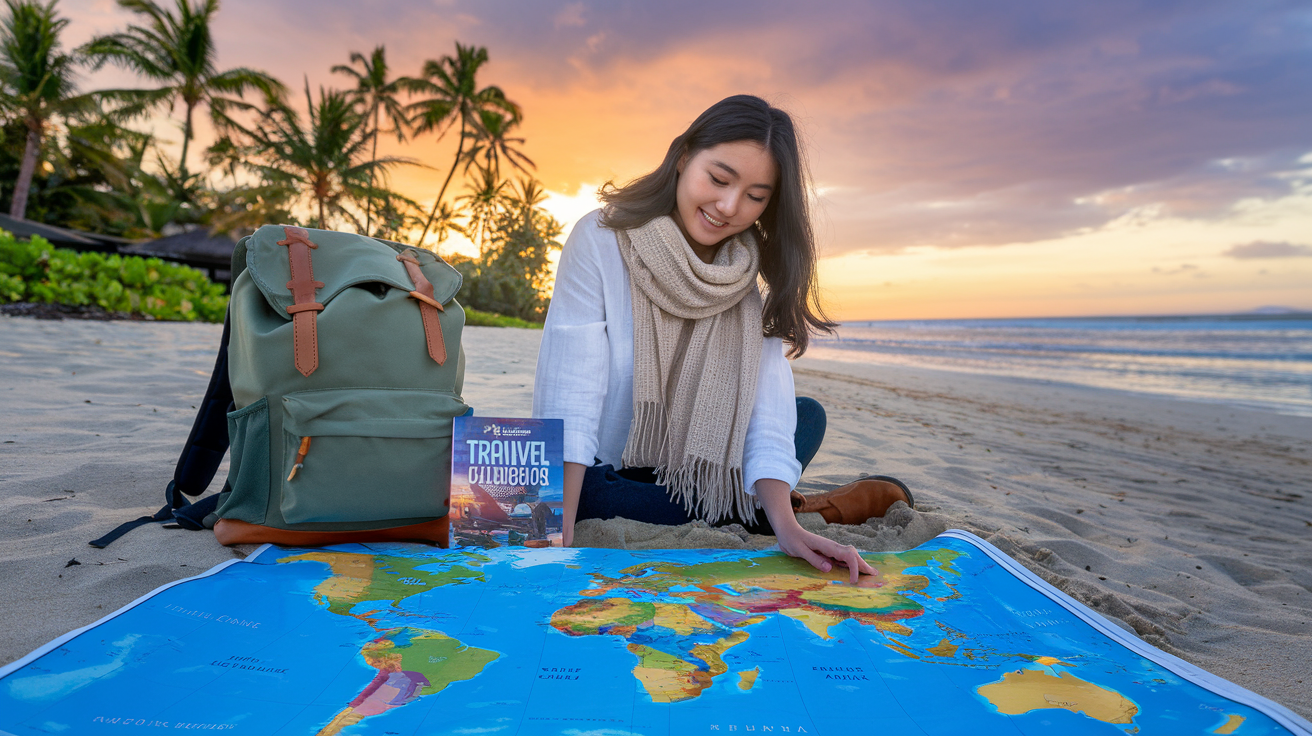
Budget travel opens up a world of possibilities, allowing you to explore new destinations without breaking the bank. By implementing the strategies discussed in this post, from careful planning and finding affordable transportation to choosing budget-friendly accommodations and dining options, you can significantly reduce your travel expenses. Remember to take advantage of free or low-cost activities, use money-saving hacks, and make informed decisions about currency exchange and travel insurance.
Ultimately, the key to successful budget travel is flexibility and smart decision-making. Whether you’re backpacking through Europe or exploring off-the-beaten-path destinations, embrace the adventure that comes with traveling on a budget. With proper planning and a willingness to step outside your comfort zone, you can create unforgettable experiences without compromising your financial stability. So pack your bags, set your budget, and embark on your next affordable adventure!